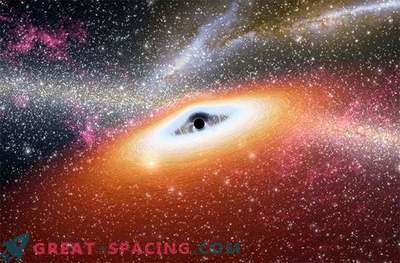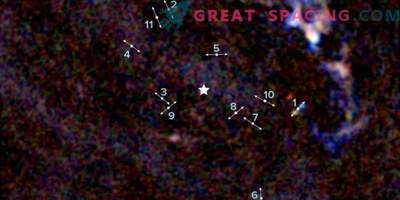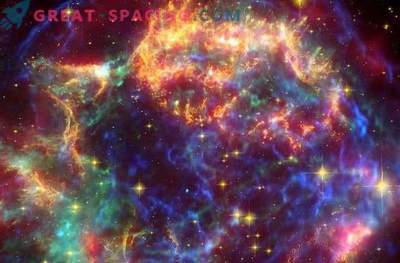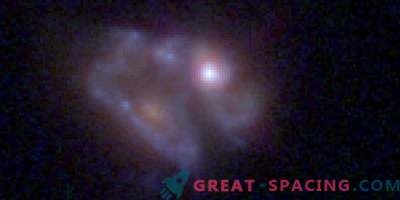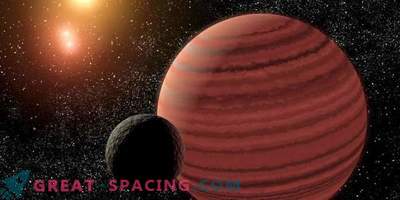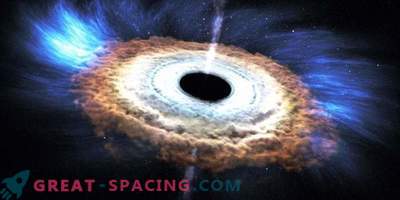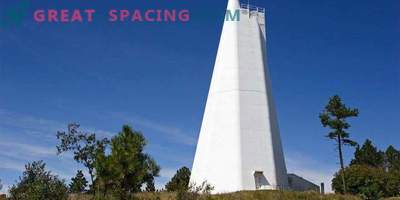
Artistic vision of a supermassive black hole in the galactic center. Blue displays radiation from a material close to a black hole. The gray structure surrounding the hole is represented by gas and dust.
Young bright galaxies flare up with new stars, distinguished by their fast paced formations. But stellar birth fades as the galactic development. A new study shows that the black hole's mass in the galactic center determines how quickly the “damping” will occur.
Each massive galaxy has a central supermassive black hole that exceeds the massiveness of the Sun a million times. It is believed that the energy released from the active galactic core, disables the stellar formation due to the heating and dispersion of gas.
This idea has existed for several decades, and scientists have found that modeling galactic evolution must include feedback from a black hole in order to reproduce the expected properties. But the observed evidence was not enough.
New surveys show a continuous connection between the activity of the black hole and stellar formation during the existence of the galaxy. This process affects every stellar generation.
The researchers focused on massive galaxies, where the mass of the central black hole was measured in advance by analyzing stellar motion near the center of the galaxy. To understand the history of the birth of stars, scientists have analyzed the detailed spectra of their light, obtained by the Hobby-Eberle telescope. Spectroscopy allows you to separate and measure different wavelengths of light coming from an object. The team used computational methods to analyze the spectrum of each galaxy to reconstruct the history of star formation. When comparing the history and four black holes of different masses, we managed to find amazing differences.
For galaxies with the same stellar mass, but a different mass of central black holes, the stellar birth faded faster if the hole was larger. Therefore, the star birth lasted longer where the hole was small.
Supermassive black holes glow with the active absorption of matter from the inner regions of the galaxy. Active galactic nuclei are very different, and properties are based on the size of the black hole, the accretion rate of the incoming material and other factors.
There is still no exact information about the nature of the feedback from the black hole, which stops the stellar formation. There are various ways in which a hole is able to release energy into galaxies, and theorists have many options. But all this needs to be checked on models and direct observation.
